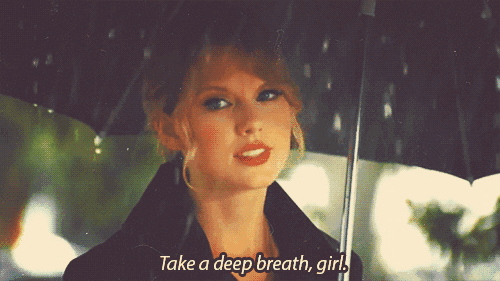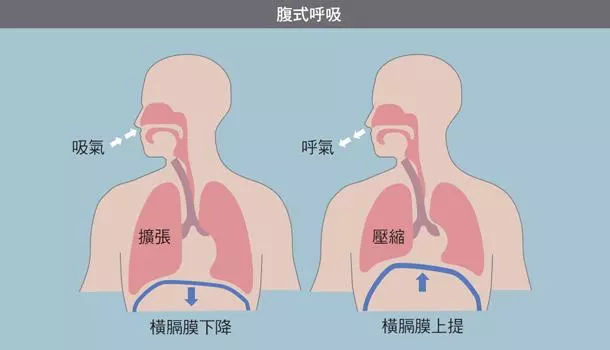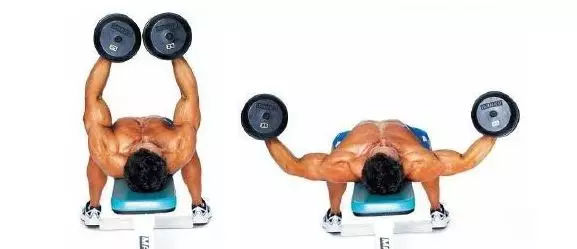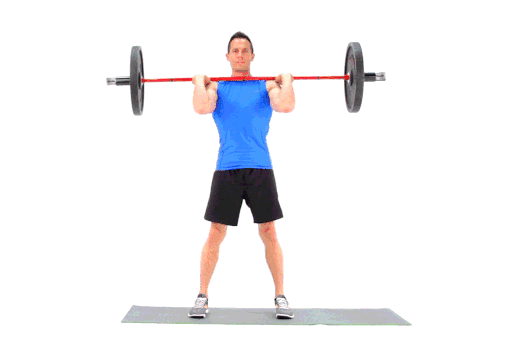In fitness, breathing not only provides oxygen to the body, emits carbon dioxide, but also changes the pressure in the body cavity, which in turn changes the tension of the surrounding muscles. The higher the pressure in the body cavity, the higher the muscle tension and the more stable the body movement. The lower the pressure in the body cavity, the lower the muscle tension and the more flexible the body's movements. The correct breathing rhythm helps to improve the athletic ability and also enhances the effect of fat loss. The wrong way of breathing will not only make your training bottleneck, but also bring physical discomfort, such as dizziness and swelling. The most common is that when you run long distance, you can't run out of breath and finally stop running, which affects the training effect. It’s right to breathe when you are in the gym. Let ’s talk today. 01 Abdominal breathing Abdominal breathing is the most basic requirement in fitness. Basically, no matter what kind of exercise, the coach will tell you not to use chest breathing, but to use the abdomen. Everyone can feel the abdominal breathing method at rest: 1. When exhaling, the diaphragm is naturally relaxed and lifted, and the air from the abdomen and chest is discharged. The abdomen is concave and there is almost no undulating change in the chest. 2. When inhaling, the abdomen slowly expands with the air inhalation, the tension of the diaphragm increases gradually, and the contraction decreases. The air is introduced from the abdomen and gradually fills the entire abdomen and chest. The same abdomen feels bulging, and the chest is almost unchanged. On weekdays, you can practice abdominal breathing, which helps to tighten the abdominis muscles and maintains a certain improvement effect on the waist. 02 Synchronous breathing As the name implies, synchronized breathing is one breath per action, and breathing is done during the action. 1. When the muscles contract, instantly close the air and exhale quickly. When the muscles stretch, slowly inhale. This type of breathing is generally used when the load is heavy, in the supine position, or when the shoulder strap and chest and abdomen are to be fixed. For example, sit up, get up and suffocate, then exhale. Take the big weight leg as an example, inhale, prepare; release the pedal support bar, exhale when the quadriceps force, lift the pedal forward and upward; after reaching the knees and knees straight, do not pause, Slowly bend the knee joint and gradually lower the pedal while inhaling until the knee flexes to the maximum. Repeat the above actions. This method of breathing avoids helium for a longer period of time during exertion. Long-term hernia rapidly increases intrathoracic pressure and intra-abdominal pressure, which affects the venous return of the heart, which causes the blood pressure to rise instantly. It is not only easy to cause hypoxia in the brain, but also may cause the retinal blood vessels to rupture and become blind. 2. Inhale quickly when the muscles contract, and exhale slowly when the muscles stretch. This breathing method is the opposite of the above formula. It is quick and powerful when inhaling, and it is slow and deep when exhaling. Generally used in light load and concessional practice. For example, when doing "dumbbell flying birds" and other actions. Both arms are divided and inhaled when adducted upwards. When adducting, think about the middle of the pectoralis major muscles and exhale when the arms are nearly straight. 03 Asynchronous breathing The respiratory rate is not equal to the number of movements, and the breathing is called asynchronous breathing when the movement is intermittent. 1. Take a few breaths at a time. This method is usually used at the beginning of training, when it is light, fast, energetic, or ready for activities. For example, people who run in the same place, legs up, let the whole body in a state similar to running, can be two steps, one step, one step, one suction, three steps, one step, three steps. 2. Breath a few times in one stroke. Mostly use it under heavy weight load (more than 90% of the weight can be withstood) or exhaustive training, adjust the breathing, in order to try hard to complete an exercise. Take the "barbell squat" as an example. Before the action starts, take two or three deep breaths. Slowly squat until the thigh is parallel or lower with the ground and inhale. Stand up to the starting position until the “peak contraction†or the action is in place, ie, make a very short exhalation, followed by a short inspiratory continuous until the action approaches the previous period of recovery or exhales when restoring. Adjust your breathing as your body approaches fatigue so you can work hard to complete an exercise. This type of breathing emphasizes overload training. 04 Tile breathing In strength training, especially the high-intensity movement of the spine, the rigid support of the spine is very important, but in many cases our erector spinae alone cannot withstand such a huge load. The tile breathing can greatly increase the intrathoracic pressure, assist in stabilizing the spine, and make the upper body a stronger rigid support, which provides the necessary conditions for resisting the ultimate weight. Valsalus breathing process: 1. Take a deep breath and close the upper and lower valves (refer to the figure below). 2. Forcefully contract all exhaled muscles and even some superficial thoracic and abdominal muscles, exhale vigorously but do not let the gas run out. It's like you have to cough, but hold it hard or it coughs out. However, the type of breathing is likely to cause the body's blood pressure to rise, so if the hypertensive patients need to use the tile breathing during strength training, it is recommended to use the "tile breathing + secondary breathing" criterion. That is: a breath is performed at the lowest level of training, a suffocation at the time of force, and a breath when the peak is contracted. If you feel that the above is really confusing, summarize the following: 1. Daily life pays attention to training your abdominal breathing habits, which helps to tighten the abdominis muscles; 2. Small weight strength training recommendations: force inhalation, drop exhalation; 3. (larger) medium strength training recommendations: (憋气) force exhaled, drop inhalation; 4. Heavy weight training recommendations: tile breathing + secondary breathing; 5. Aerobic training: 1 breath in a few movements. The breathing pattern during fitness should change with the action. The correct breathing not only plays the role of “oxygenationâ€, but also fixes the shoulder strap, which plays an important role in adjusting the position and assisting in the completion of the movement. In general, good breathing can be a good aid to the exercise itself. In the end, more nonsense, students with outdoor exercise habits must pay attention to the outdoor air quality, otherwise the correct breathing method is meaningless. Moreover, in the past two days, there was a dusty weather in Beijing, Tianjin and Hebei. Be sure to wear a mask and stop the outdoor exercise. Manual Green Screen,Portable Green Screen,Tripod Green Screen,Green Screen Set Dongguan Aoxing Audio Visual Equipment CO.,Ltd , https://www.aoxing-projectorscreen.com






